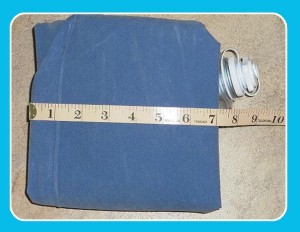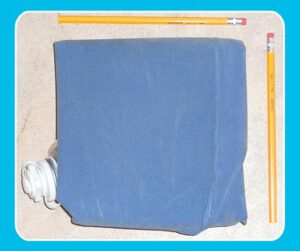Is the 1st Class Kid Travel Pillow difficult to inflate or deflate?
The valve is designed to allow for very fast deflation. The removable inflation/deflation valve has a one-way valve that keeps air from exiting the pillow. When the bottom part of the valve is released deflation is quick. Please refer to instruction booklet that came with your pillow or download instructions here.
Newer aircraft no longer have the older ventilation systems hence, for manual inflation please take a look at our video here for quick and easy instructions.
When is the best time to inflate the 1st Class Kid Travel Pillow?
Wait until you are at cruising level. The reason for this is that the cabin pressure will have stabilized. DO NOT fill to max as this will cause some difficulty placing your pillow between the seats. It is recommended that you place the pillow almost inflated then finish inflation by mouth. Please take caution as you will be at altitude so take breaks if blowing manually.
The inflation valve has a one-way valve that keeps air from exiting the pillow while you are pausing to take a breath.

What if I’m in the middle or aisle seat and someone wants to get in or out?
The 1stClassKid Travel Pillow can still be used comfortably in the center or aisle seat, however, if you want your child to sleep uninterrupted, you should request a window seat. If you need to let someone in or out, just slightly deflate your pillow so you can lift it out temporarily.
What is the size of 1st Class Kid Travel Pillow when deflated and inflated?
CARRY WEIGHT approx. 1pd (0.5Kg). You can roll/fold how you like in your carry-on.
The 1stClassKid Travel was designed to fill in the legroom area of economy airline seat. When INFLATED to its max it will be a Rectangular shape approx. DIMENSIONS 18” L by 12” W” by 18” H but if the space is smaller then you just stop inflating at that point.
The photos below show how it is folded when it first arrives to you.


What is the 1stClassKid Travel Pillow Made Of?
Our pillow has a PVC base and the remaining sides are MADE OF a high-quality Flocking which looks like ‘Felt’ material but tougher! This provides a non-stick, non-sweaty surface for your skin!
Packing your 1stClassKid Travel Pillow
When deflated, it can be folded or rolled to suit your particular needs. Keep it handy so when you reach your seat you can place it under the seat in front of you. Once you are at cruising level then inflate anytime.
Cleaning
To clean, wipe with a damp cloth. If thorough cleaning is required you can hand wash in a sink using mild soap. Ensure that the deflation valve is installed and the inflation cover is screwed on. The 1stClassKid Travel Pillow will not absorb much water so it should dry very quickly.
General Precautions and Notes
The 1stClassKid Travel pillow is an inflatable device. Its sole purpose is to support the legs. Air leaks and under-inflation could contribute to incidents so DO NOT place head on pillow. Infants & children should be monitored during use.
Sitting/sleeping in any position for an extended period may cause stiffness of joints and/or muscles. This holds true whether using 1stClass Kid or not. Normally, a sleeping person will move several times during a nap. If you use 1stClass Kid for extended periods without shifting your position you may experience some stiffness. Also, 1st Class Kid is not intended to provide the only position for sleeping but rather provides an option that did not exist previously.
Important: “Shrinking or ballooning” due to cabin pressure changes: since the 1stClassKid Travel pillow is made of stretchable material, it can expand to a size that is larger than its normal maximum size. If inflated at take off altitude, it may expand or contract due to the plane’s internal cabin pressure. To avoid this, simply inflate when the plane reaches cruising altitude. If this does occur, simply add or release air as needed.
